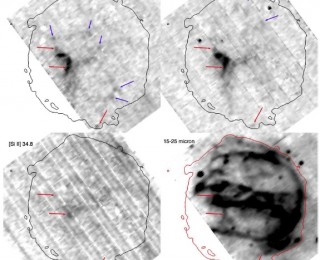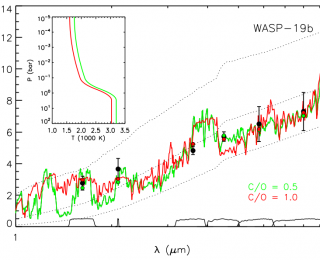
by Ruth Angus | Jun 5, 2014 | Daily Paper Summaries
Kepler-93b is a super-Earth with a radius of 1.481 Earth radii, plus or minus Long Island.

by Ben Montet | Jun 3, 2014 | Current Events
Ten years after launch, financial problems may mean the demise of the Spitzer space telescope. Today, we review its history and discuss its possible future.

by Lucia Morganti | Jan 21, 2013 | Daily Paper Summaries
For the first time, diffuse X-ray emission from young stars is identified in the Small Magellanic Cloud (SMC), using data from Chandra.

by Adele Plunkett | Mar 2, 2012 | Daily Paper Summaries
Paper title: Spitzer Imaging and Spectral Mapping of the Oxygen-rich Supernova Remnant G292.0+1.8 Authors: P. Ghavamian, K. Long, W. Blair, S. Park, R. Fesen, B. Gaensler, J. Hughes, J. Rho, P. F. Winkler First Author’s Affiliation: Towson University, MarylandA star ends its life in a violent supernova (SN) explosion according to one of two (general) mechanisms — (1) core-collapse, forming a neutron star or black hole and an extremely energetic shock wave; or (2) thermonuclear explosion of a white dwarf, leaving no central remnant and releasing a very characteristic amount of energy used to infer the distance to these standard candles. Core-collapse SNe can be further classified according to their progenitor stars as type II, Ib or Ic, while thermonuclear supernovae are known as type Ia. More discussion on types of SNe can be found here, or in this Science in the News piece by another astrobiter.One way to better understand how SNe progress is by studying the leftovers, or remnants, of these events (if you like supernova remnants, check out this astrobite too). For example, G292.0+1.8 is a collection of cosmic remains from an unrecorded supernova event that probably occurred about 3000 years ago, and it is unique for its oxygen-dominated optical spectra — hence, its classification as an oxygen-rich supernova remnant (SNR). Moreover, G292 is the remnant of a core-collapse SN, with filaments of gas and dust emitting light as shocks from the SNR propagate outward into the circumstellar medium. The goal of today’s paper is to study emission from G292 at different wavelengths in order to investigate the energy and the morphology of core-collapse SNe.Observations of...

by Lauren Weiss | Jan 2, 2012 | Daily Paper Summaries
If you would like to live in a less-polluted world, you might want to consider moving to Wasp-19b. Its lack of a temperature inversion helps it keep clear skies.

by Adele Plunkett | Aug 31, 2011 | Daily Paper Summaries
Many aspects of the star forming process, especially the process to form massive stars (greater than 8 solar masses), remain unknown. This paper distinguishes between two stages of star formation by fitting models to observations of several young stellar objects in the giant molecular cloud G333.






